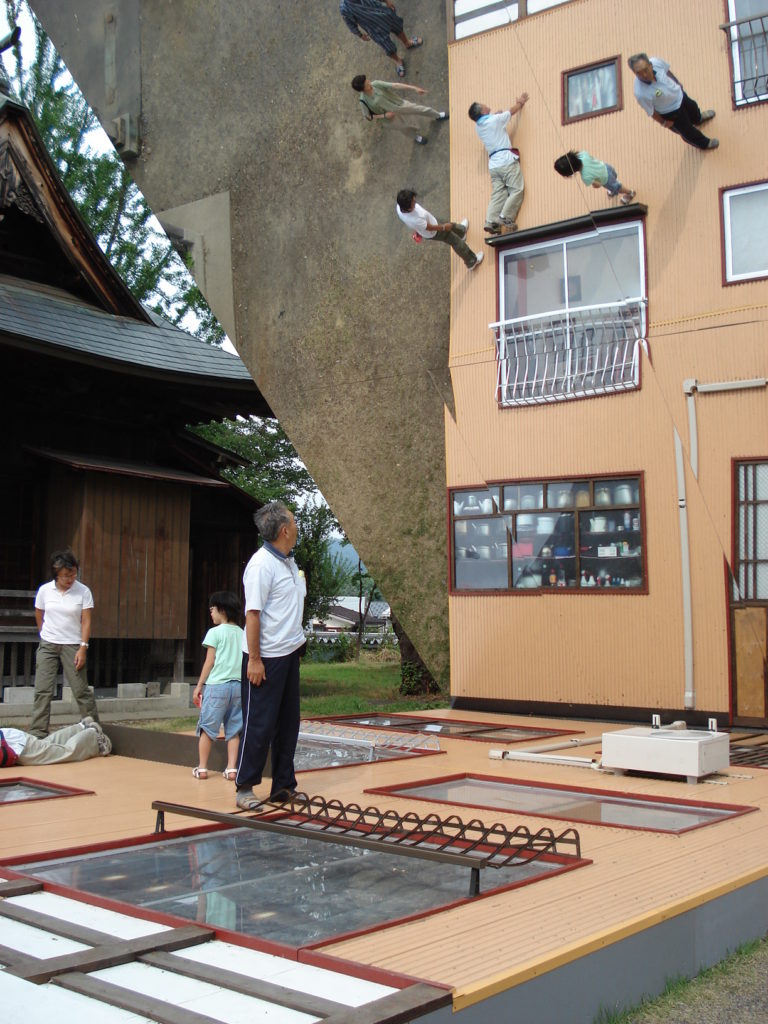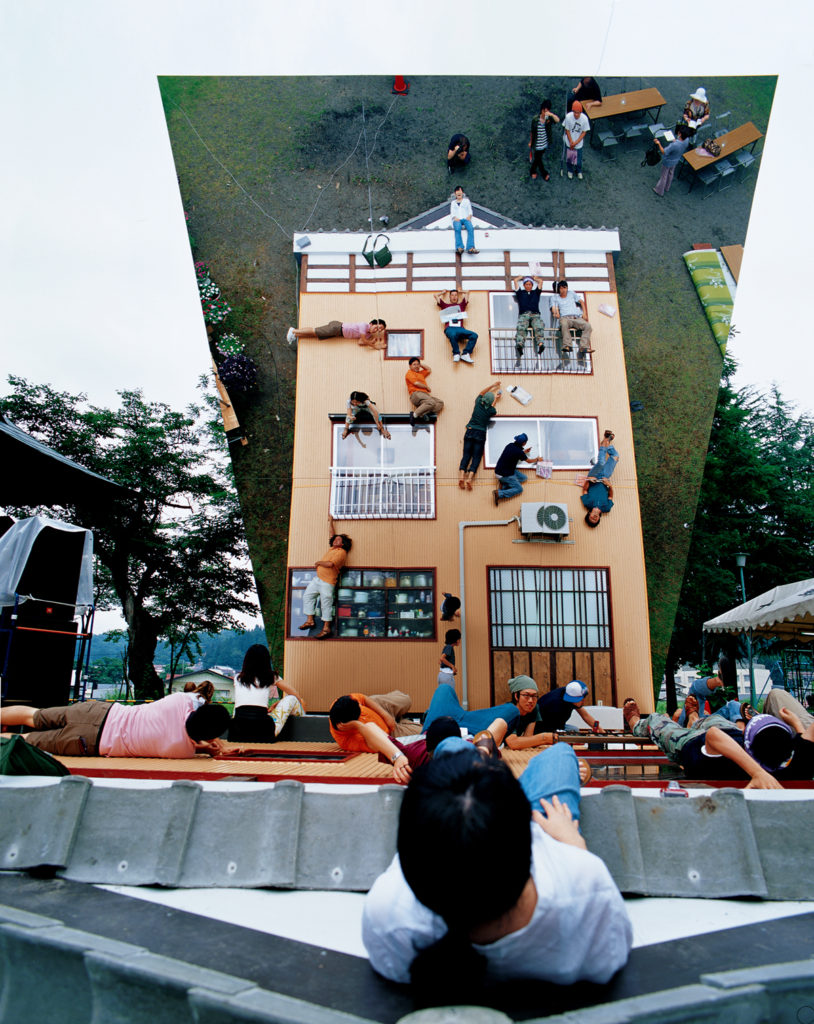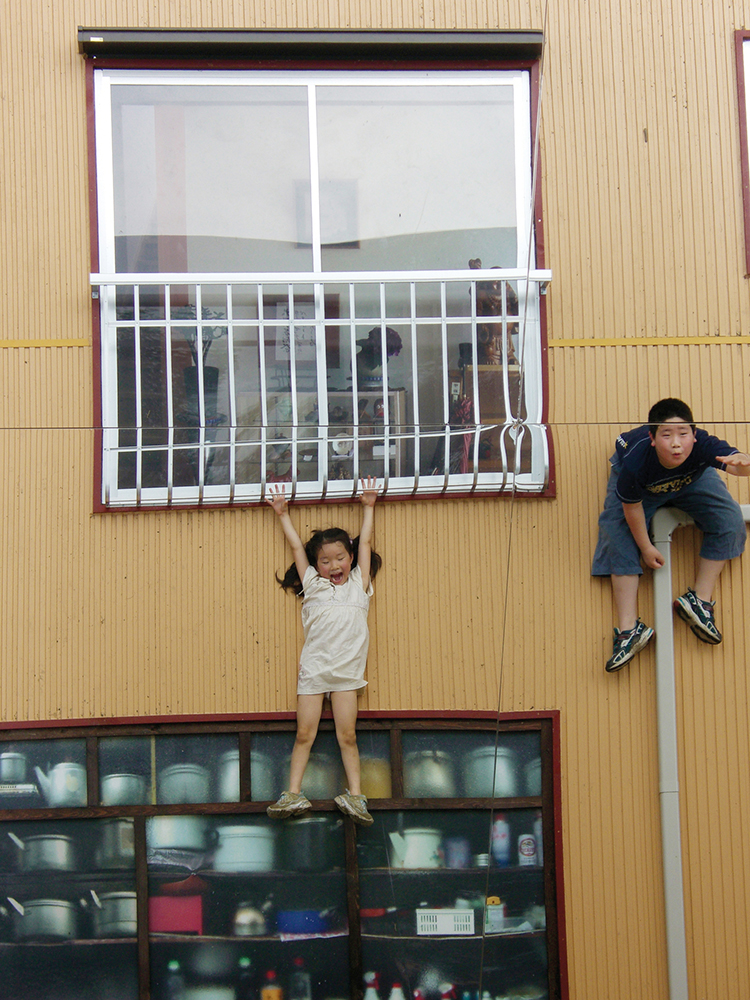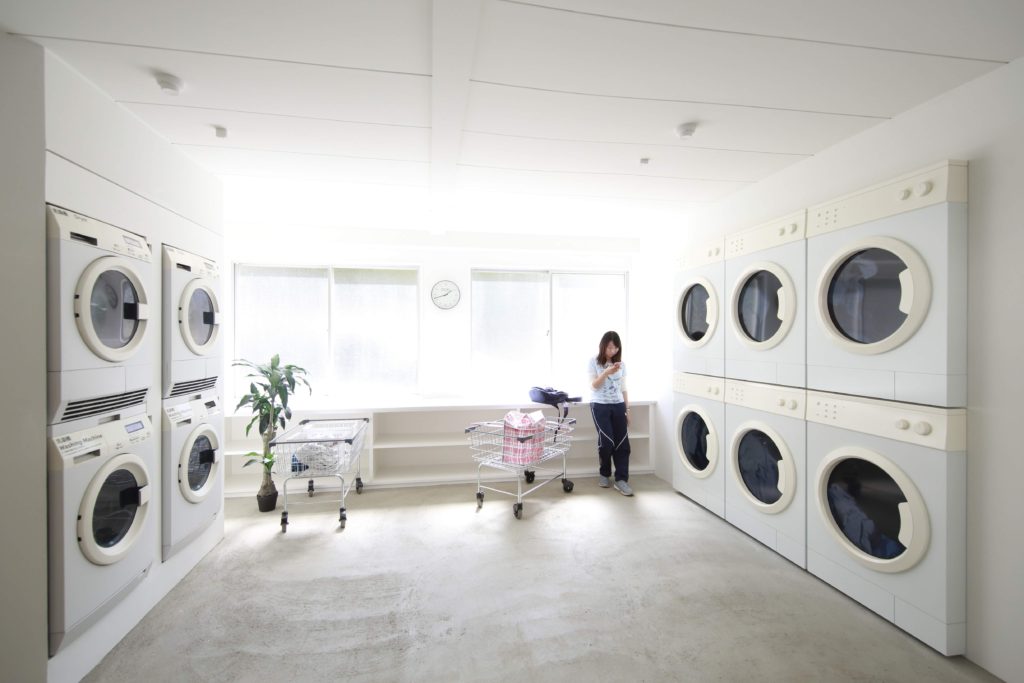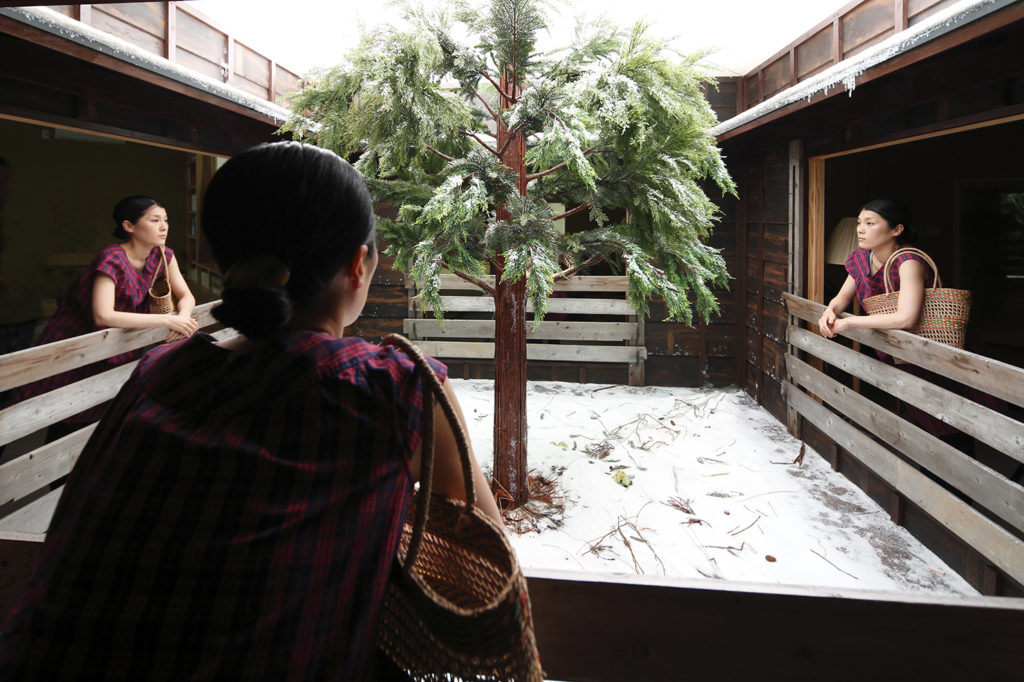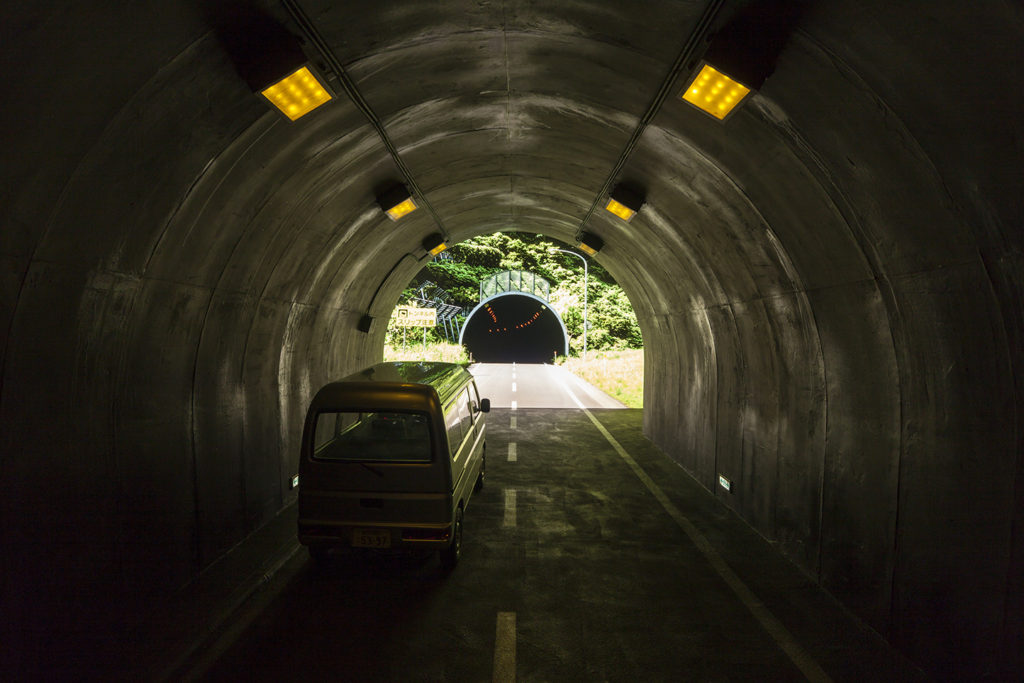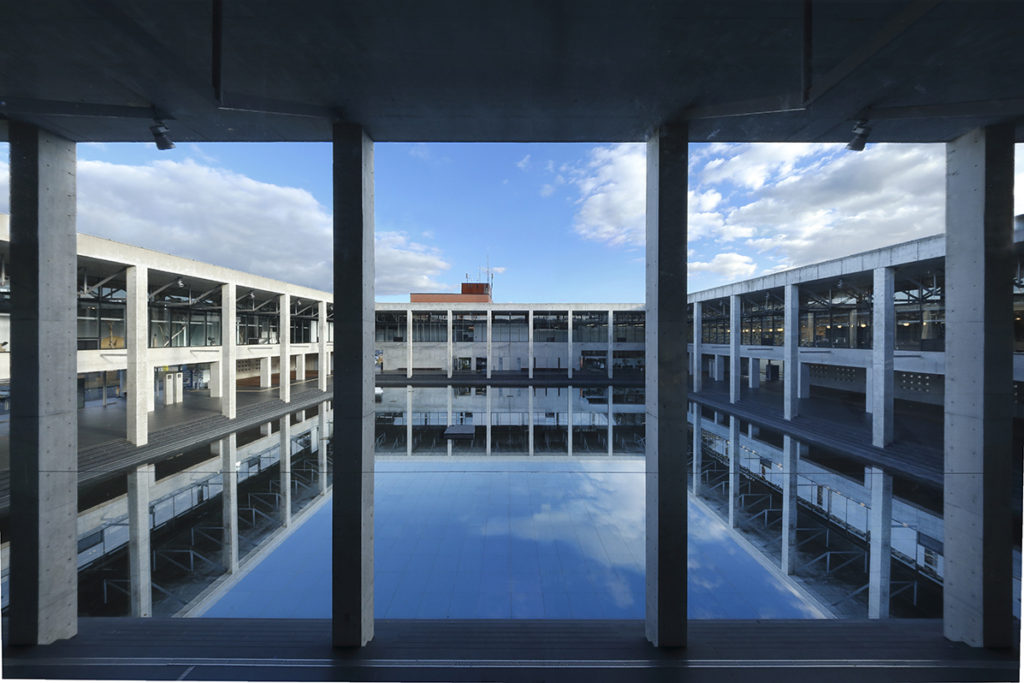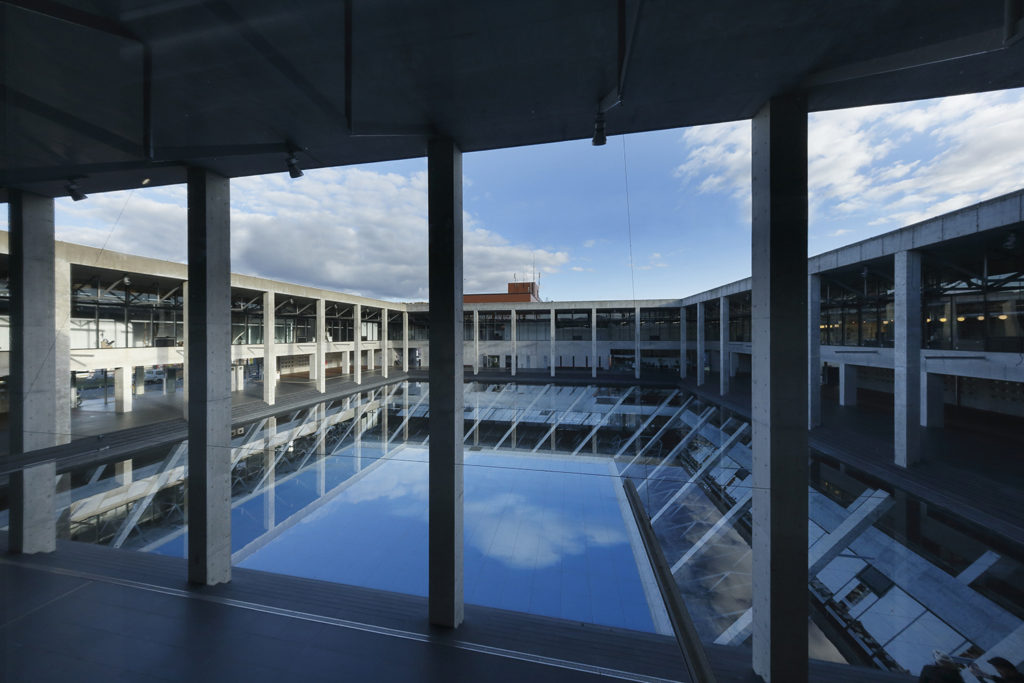TOPICART FESTIVALART COORDINATION2020.09.01
Interview with Leandro Erlich :
Keep Thinking and Keep Awake --Questioning the possibilities of art in the world affected by the COVID-19 pandemic
Leandro Erlich’s new work Infinite Staircase, whose production had been postponed due to COVID-19, has just been unveiled to the public at the newly opened museum, KAMU kanazawa. What is he thinking about at this moment? Connecting online to his home in Uruguay, we asked him about the origin of his creation and the possibilities of art in the future.
―Uruguay is on the other side of the earth from Japan. What is the situation like over there?
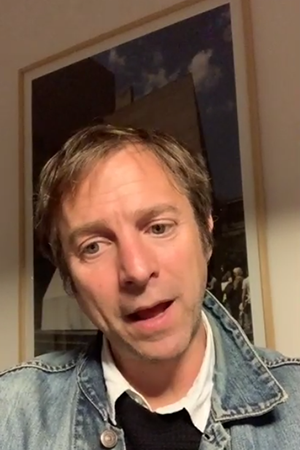
Erlich:The situation with Covid-19 does not seem to be that bad over here. I suppose it is similar to the situation in New Zealand. The population of Uruguay is very small, so it is quite under control. I think it also has to do with the fact that the outbreak of Covid-19 came much later here than in Japan and Europe.
―What do you think about the current situation?
Erlich: I think numerous things will come to change over time. First of all, the effect of the invasion caused by this virus is nothing particularly new. In terms of the use of technology, many things have been created in the last 10 to 20 years, and while these tools are accessible to all, I believe we are at a moment in which there will be various changes. I feel that these changes will remain, even after the situation subsides. I’d still want to meet and encounter people personally, and I understand the importance of one-on-one conversation. Yet now, we are experiencing a situation in which this kind of communication is not possible. Although we may think that it’s strange right now, there may come a time in the near future when it doesn’t feel so out of the ordinary. Many people are undergoing this same experience.
People’s movements have been restricted, and we find ourselves isolated from one another. Social events and social activities have significantly decreased, and people only spend time with their families, with fewer opportunities to work and interact with other people. We now have more personal time to ourselves. This is very interesting. The pandemic is indeed negative both economically and socially, and will bring about side effects that are more dangerous than the virus itself. At the same time however, I think that the world needs to stop for a moment. Our human activities have become like a constant and continuously operating machine. What will happen though, if we don’t have time to think and reflect on things? At times it is important to have moments of silence. I believe that in the wake of this pandemic, everything will be much more meaningful and have more deeper value. I don’t think this feeling will last forever. But for example, in the upcoming Echigo-Tsumari Art Triennale or Setouchi Triennale, I feel that the artist will be able to contribute something more to communities. People are looking to see something that inspires new ideas and brings hope, enabling them to believe in the future.
――Do you feel that the pandemic will also influence your work?
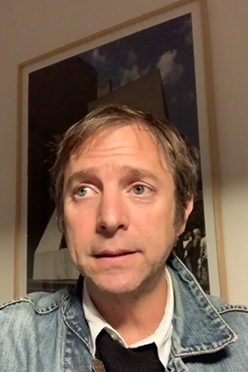
Erlich:I am sure there will be influences. More importantly however, I feel that even though the work doesn’t change by itself, the way we see and interpret things will change, as the world has changed.
――I understand.
Erlich:For example, some of my works are based on the premise of interaction and participation, and invite people to come together. However, this is not the best timing for this kind of work, as we are required to keep our social distance. Now we find ourselves thinking about the two concepts of social distancing. One is that social distancing is a good thing, as that which offers safety and enables us to live. The other is the idea that not keeping our social distance can possibly result in death. I think that we need to integrate and unify these ideas. Of course it is important to keep our distance under these circumstances, but at the same time we must not forget that we human beings are social animals.
―Infinite Staircase in KAMU kanazawa is your second permanent work in Kanazawa, following the Swimming Pool which is installed in the 21st Century Museum of Contemporary Art Kanazawa.
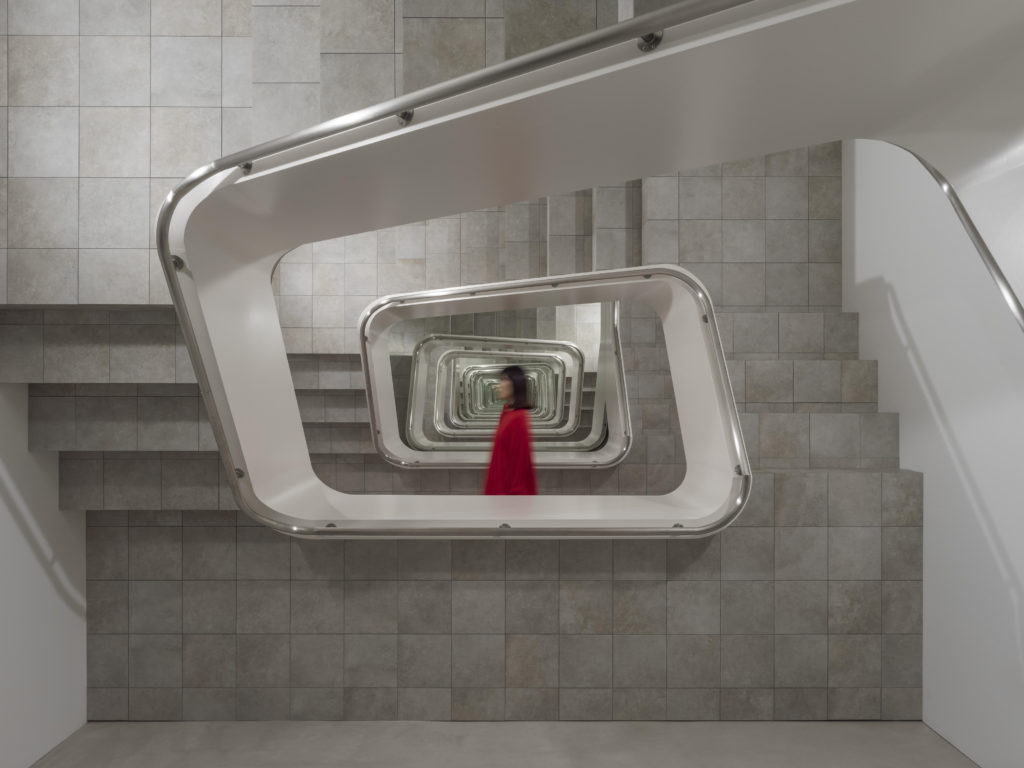
Erlich:I created this work in thinking about the quality of the space. The space introduces a new sense of direction to the space of this new museum. The work is not strictly related to the Swimming Pool, and is something entirely different, yet in the sense that it is in the same city it is important for the works to be in a certain dialogue with and compliment one another. Visitors may already be familiar with the Swimming Pool, so here I found it is important to create a new experience that is related to the architecture and the space.
――Art Front Gallery has had the pleasure to work with you over the past 15 years since 2006, when you created Tsumari’s House for the 3rd edition of the Echigo-Tsumari Art Triennale. Could you tell us about your experiences regarding Tsumari’s House?
Erlich:It was a wonderful opportunity where everything was a first-time experience for me. Tsumari’s House was the first time that I was able to introduce a large-scale installation to the Japanese audience along with many important artists from around the world who were participating in the triennale. For me it was a memorable experience, not only because the work was exceptionally well-produced thanks to your help, but also in terms of the way the local people interpreted the work, and the way in which it generated much enthusiasm for the community. I spent a few days in Tokamachi after the installation, and was invited to the home of an elderly man who lived next to the work. I cannot speak Japanese and neither could he speak English, but we were able to communicate with one another and talk over drinks. I found this to be a very spontaneous sense of joy and reaction. It was the first triennale I had participated in, yet it was not targeted only to those related to the art world or to the art community, but also was accessible to the many people on the streets, and the various people living in Echigo-Tsumari. The Echigo-Tsumari Art Triennale really changed the nature of the triennale. I was able to clearly understand the mission of the project that Fram Kitagawa was advocating, that is, to activate communities through introducing art.
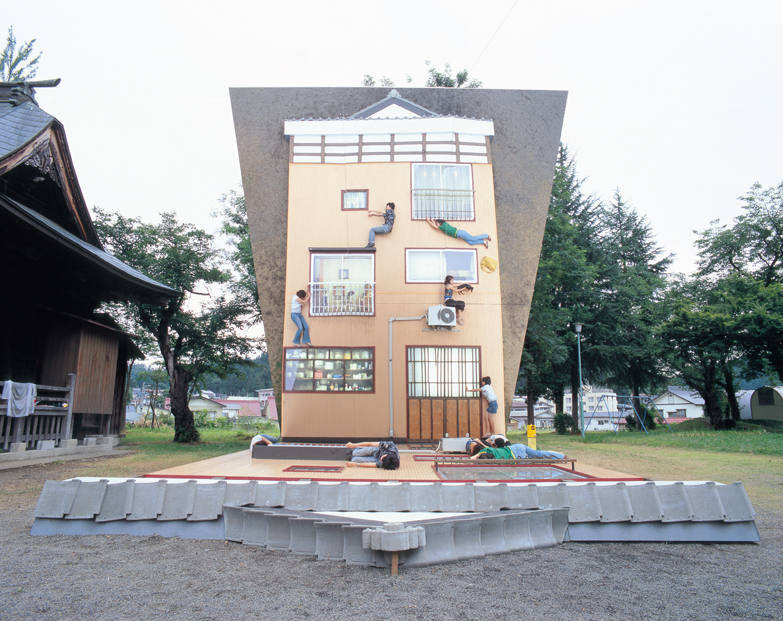
――There was much surprise and excitement in experiencing and becoming a part of your work. Through your work we were also able to discover the characteristics of the local houses in the area. Tsumari’s House was a very typical yet symbolic work for the Echigo-Tsumari Art Triennale.
Erlich:Yes, I think I was pleased with everything. It all started with preliminary studies of trying to understand the architecture, as well as thinking about what kind of building would be most appropriate for the context. I also later participated in the Setouchi Triennale in 2010, but I think the projects that I have developed with you in Japan have all provided me with the opportunity to experiment, come up with new ideas, and put them into practice. For me, every project was not only about presenting the work to a new audience, but was also that which served to inspire the artist. It is not necessary to always experiment with new things. To create a dialogue with the context is what is most challenging, yet instills me with great inspiration.
,2019,photo by Keizo Kioku,courtesy of the Setouchi Triennale Executive Committee
――Both Echigo-Tsumari and Setouchi are rural areas. Are there any differences for you working in an urban or rural context?
Erlich:The best place to engage with and connect to art is not necessarily the place where it is expected. The city is constantly overflowing with extensive amounts of information, from commercial information to social information, signs, and so on. In this respect, there is a lot of “noise” in urban areas. On the other hand, rural areas allow us to be more open and closer to nature. What I think is interesting is how creativity and “being close to nature” is that which is extremely connected. The pandemic has changed the way in which we relate to urban and rural contexts. In these days, somehow, rural life offers much more freedom than urban life. In urban life there are many more restrictions and limitations. In particular, in big cities, there is currently no access to social life and culture. Our life experience in the city is not so great anymore. In rural areas you can walk freely in the forest and feel yourself within nature, without the sense of being confined to this highly abnormal situation. Now, people living in the cities are all afraid of one another.
――The pandemic has in a sense exposed many things.
Erlich:I don’t know what kind of effect this has, or what changes it will bring. But there are two things that I can say. First of all, is that technology has proven not to be necessary for people to gather together in one place as in the past. The other thing is that demographically Japan’s population is heavily concentrated in the cities, resulting in there being many empty houses in rural areas like Echigo-Tsumari and Setouchi. As you know, people chose to go to the big cities. I wonder though, if new ways of thinking will come to surface in the future.
――Now people are trying to move back to the countryside from the cities. The Covid-19 pandemic has further convinced us of the fundamental philosophy and concept of the Echigo-Tsumari Art Triennale, that “human beings are a part of nature.” It is a concept that is in alignment with our current times.
Erlich:Yes, you are right. I think that rural life really completes and makes the best of our life experience. Art is also important in introducing new visions and new ideas to rural communities. I also personally wish to live in a place that is close to nature. When I am in nature, I feel that all the answers are here, within nature. It is also refreshing when it comes to thinking about art. Every day the sun rises and sets. Each and every moment of this serves as inspiration for art. I think that combining these two worlds of nature and art, can give rise to remarkable projects.
――We now find ourselves reconsidering our civilization and lifestyle. We feel that your work challenges the concept of universal space in the twentieth century, but is this a critique on your part towards modernized culture?
Erlich:I think so. My work very often highlights human construction, that is, architecture. Architecture is functional, and we live within these functions. In my work however, architecture does not assume any function. The act of construction is not exactly the path of nature. Architecture is that which is great, and is one of the ways in which we as human beings participate in the world. That being said, our participation in the world is not necessary. What is clear is that like the way in which we can exist anywhere, our presence is open. It is important to establish a balance between things and nature. I do not wish to critique things. I want to be conscious, and look at things and question things. It is from here that ideas are born.
――Did you study architecture at university?
Erlich:No, I studied philosophy. I grew up in a family of architects, including my father, brother, and aunt. For me, my knowledge of architecture is comparable to a child growing up on a farm knowing lots of things about animals. I grew up while seeing how places were built and constructed, so architecture is something that is very familiar to me. It is embedded within me like a certain language or tool of sorts.
――Why did you choose to become an artist rather than an architect?
Erlich:I was always fascinated with creating and bringing new things to the world. When I thought about becoming an artist, I contemplated what an artist’s life would be like. I felt that an artist is someone who can see the world through their own eyes, and communicate how they view and perceive things to others. I think that it is a great privilege to be able to communicate with others through our own ways, and in our very own field. Perhaps this was not the case for art of the past. However in our society, it is necessary for artists to be original and have their own voice. There are of course certain trends in contemporary art, yet it is no longer sufficient to simply adhere to them. It was a great challenge for me to become an artist, but it also instilled me with much freedom and opportunity. Having been young at the time, I didn’t know how I could become an artist. What may seem easy isn’t in fact easy at all. I was also rather uncertain as to how the life of an artist would be. That being said, I knew that life is uncertain for everybody, and sooner or later, we all realize that we are born into a society that makes us feel this way. Early on in life I was ready to jump off the cliff of uncertainty, and climb into the boat of uncertainty. This is also about the language of my work. Very often, things are not what we expect, but it is these moments that create surprise. Surprise may generate anguish, but it can also bring some kind of joy. Surprise can be likened to a wake-up call. Looking at things over and over again is the best way that enables us to transcend life.
――So your adventure still continues. You mentioned that you studied philosophy at university?
Erlich:I went to art school after completing my high school studies, but I didn’t really enjoy it. Discussions on figurative painting and abstract painting for example, wasn’t something that interested me. Even 30 years ago, such discussions seemed old and outdated. In addition to exploring technique, I was searching for another way of thinking. For example, if you study medicine at university, six or seven years later, you become a doctor. If you study architecture, you become an architect. In the case of art school however, just because you studied there for six years, it doesn’t necessarily mean that you can gain the way of becoming an artist. You may, for instance, grab the path of becoming an art teacher. Eventually you obtain some kind of diploma. What if you want to become an artist? Art school is not the place for you to capture your path towards becoming an artist. Instead, it is a place where you can find your own art and the meaning of what you want to do. It may be gardening, in which case, a botanist could become an artist. Art is a truly interesting activity for humanity, as we are not specialized in one direction.
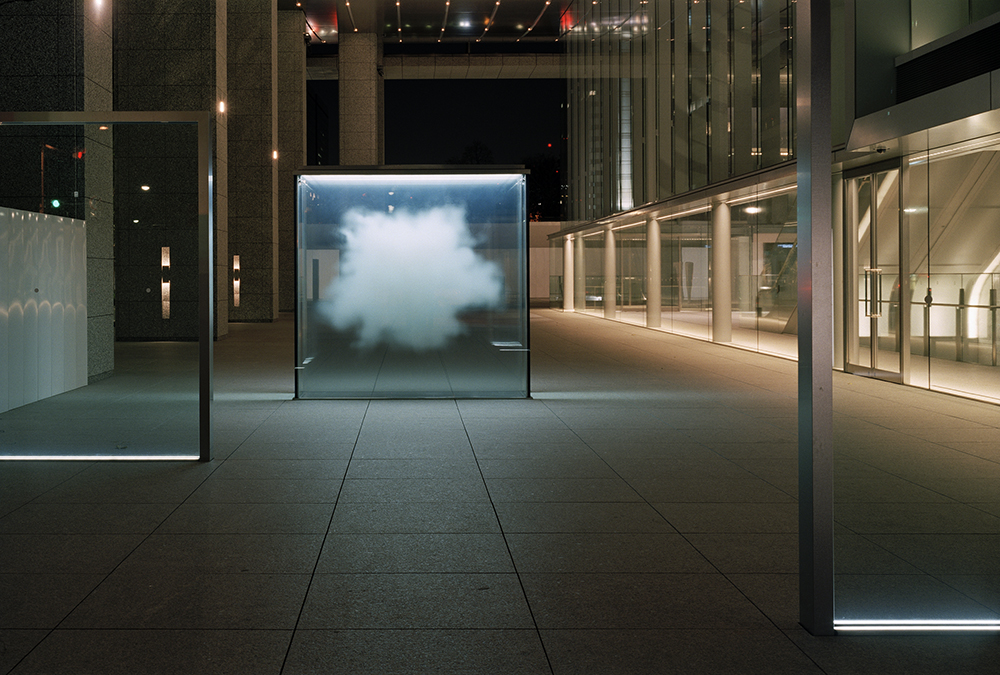
――That is very interesting. So, you were born in Buenos Aires, and currently live and work in Montevideo. These two fascinating cities bring to mind literary figures such as Borges, as well as Lautremont who became a source of Surrealism. In terms of the “power of the place,” how have these two cities influenced you?
Erlich:Yes, there are a lot of aspects that relate to cities where I grew up and currently live. I always feel that we are at the very edge of the world, and are far distanced from the cultural centers, more or less in the periphery. On the other hand, unlike Japan or Europe, both Argentina and Uruguay are very young countries, with histories of only 200 years or so. Unlike Mexico or Peru, Argentina doesn’t have such a large native population. It is a very fertile place, in which many different things have come together to create the country’s identity. It is not easy to define this identity. There are many immigrants from Europe, such as France, Spain, Italy, and Germany, and these people have served to create and claim a new culture. I think it is this crossing and integrating of cultures that greatly fascinated Borges. Borges was also drawn to the mysticism of the Far East such as Japan and ancient China, which he incorporated into his writings.
――You also create works through drawing inspiration from literature. Are there any philosophers that you are fond of?
Erlich:There are many. At the time I was interested in Western philosophy. I was also drawn to Eastern philosophy, as I found its approach to be highly spiritual. Ancient Greek philosophers like Plato and Aristotle posed fundamental questions such as how humans had arrived in the world, as well as the nature of this world in which we live, and how we look and reflect upon things. I consider myself to be like a child, always keeping my eyes open and trying to understand everything that surrounds me.
――Your works enable us to sense the joy of discovering the world. This summer, movement and travel restrictions are still set in place in Japan, yet KINARE in Echigo-Tsumari is open to the public, and many people, especially children, enjoy playing in your pool-Palimpsest:pond of sky. They are very happy to be a part of your work. How do you want children to experience you work?
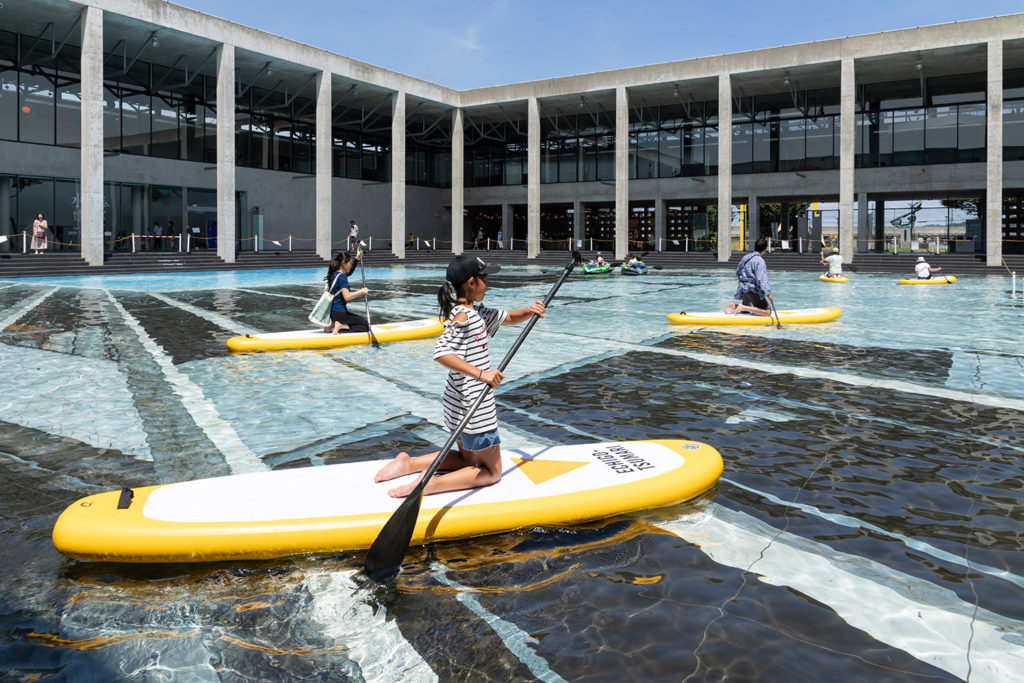
Erlich:I always anticipate interactions with the work to occur spontaneously. Children achieve this very well. Spontaneity is something we lost over time. For children, the whole world is a fascinating, and surprising place. Children cannot read longs books, but they can listen to stories, and play. They gain an understanding of the world through playing. The first step to knowledge comes with playing, and my work entails a lot of playing. Elements of surprise and new knowledge bring joy. While adults and children are different, we are the same animal. You could liken it to Hamachi, which is a progressive fish. There are some people who, when reaching a certain age, stop questioning and stop learning because they feel that they already know and understand enough. They lose their curiosity. It is a pity, because we can be 80 years old, and still bring new ideas into this world. New ideas are not only for young people, but it is for all those who are alive. Keep thinking, and keep awake.
Leandro Erlich
Born 1973, in Buenos Aires, Argentina. His solo exhibitions include the Museum of Contemporary Art, Rome (2006) and MoMA PS1 (2008), with participations in numerous international exhibitions such as the Venice Biennale (2001) and the Liverpool Biennale (2008). He held his first solo exhibition in Japan in 2014 at the 21st Century Museum of Contemporary Art, Kanazawa. His solo exhibition “Leandro Erlich: Seeing is Believing” (Mori Art Museum, Tokyo, 2017~2018), received over 610,000 visitors. Art Front Gallery has been working with Leandro Erlich since the 2006 Echigo-Tsumari Art Triennale, coordinating the production of his projects and artworks for the Setouchi Triennale, KAMU kanazawa, as well as in Taiwan and Korea.
Click here for more information about Leandro Erlich’s works
translated by Kei Benger
